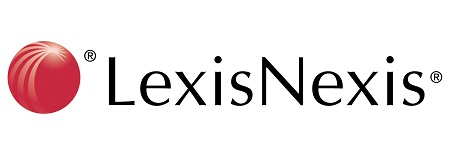London, U.K. – 22 March 2016 – Research commissioned by LexisNexis into mid-law firms finds that there is an exaggerated sense of progressiveness among decision-makers in law firms. Despite this, 47% of decision-makers acknowledge that they are traditional in their way of working, suggesting that they are struggling to let go of conventional values and adopt new ways of working. These are the findings of the report, Mind the Gap, based on interviews and surveys with over 150 law firms (56 decision makers and more than 100 practising lawyers) in England.
This reluctance to let go of old ways of working is causing a major disconnect between decision-makers and practicing lawyers on the front line on what their firm’s focus areas for change should be in 2016:
- Decision-makers rank review of information sources as their number one change planned in 2016 whereas lawyers believe increased investment in processes and technology should be their firm’s top area for change implementation this year.
- Taking on more staff ranks seventh for decision-makers while lawyers rank it fourth in the list of changes they would like to see implemented in their firm.
Similarly, decision-makers have a far rosier perception of their firm than lawyers:
- 84% of decision-makers believe that the firm has a clear strategy for the future direction of the business while only 62% of lawyers consider this to be true.
- 83% of decision-makers think the firm actively embraces change compared to 71% of lawyers.
- 72% of decision-makers feel the firm is agile in decision making, only 52% of lawyers agree.
Interestingly, most mid-sized law firms (59%) view their size as a competitive advantage and are bullish about their growth prospects:
- Four out of five firms are ‘quite or very’ confident about future growth; and the vast majority (73% of decision-makers and 62% of lawyers) say they are growing. It’s noteworthy that most of the firms that have survived the recent shake-out are growing through mergers and acquisitions.
- This optimism is especially prominent among decision-makers – 84% expect their firms to grow in the next five years, particularly due to a resurgence of demand in sectors such as property and family.
Nevertheless, the mid-law market players are aware of the considerable challenges they face and the top five problems they identify revolve around client and staff issues:
- 95% of respondents believe attracting the right staff a ‘very significant’ or ‘quite significant’ issue; followed by understanding customer and markets (91%), attracting clients (89%), staff retention (87%) and retaining clients (86%).
- Increasing demand for fixed fees is very or quite significant for 82% of respondents.
- Getting the correct partner to turnover ratio right is fundamental to the health of the law firms and is cited as an issue by 71% of respondents.
Law firms’ top priorities for 2016 more or less mirror their key challenges with 80% of respondents prioritising attracting new clients, 75% retaining clients, 75% attracting the right staff and 66% understanding customers and market, in 2016.
Worryingly though, there is a degree of complacency creeping into the mind set of decision-makers at law firms as there are a number of areas where they believe that changes have been implemented and issues resolved. The reality is that these issues aren’t finite:
- 79% of respondents say taking on more staff is complete.
- 75% of respondents claim website development has been implemented.
- 59% of respondents pronounce that investment in training has been undertaken.
- 57% consider investment in processes and technology done and dusted.
“Notwithstanding the view of law firms in the mid law market segment that their size is an advantage – even though there is little differentiation among legal services providers – senior decision-makers are adopting a tick box approach to change, evolving business imperatives and new ways of working,” commented Jon Whittle, Market Development Director at LexisNexis UK. “Firms need to keep pace with the continual changes taking place in the market, which means understanding and adapting to client and staff requirements, keeping processes and infrastructure up to date and embracing a much more proactive attitude to business growth and enhancement.”
The report explores how mid-sized firms feel about the health of their, business and prospects for growth; and how they are adapting to meet the changing needs of their increasingly demanding and tech-savvy clients and staff. The full report is available here: www.lexisnexis.co.uk/mindthegapreport


